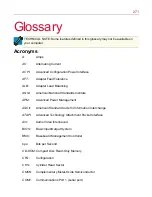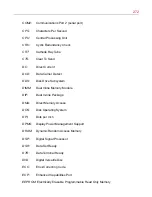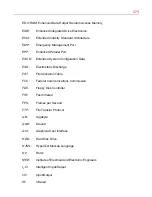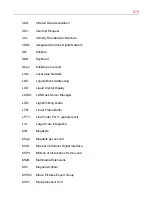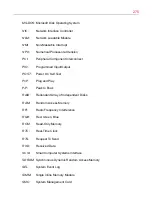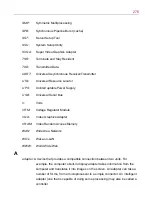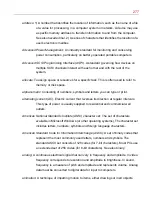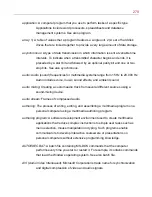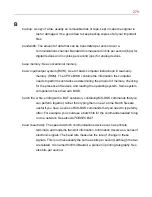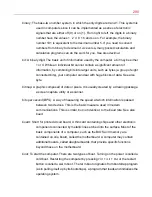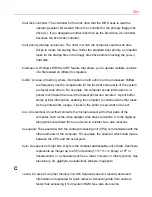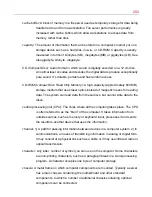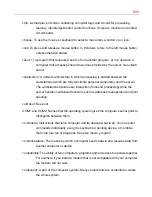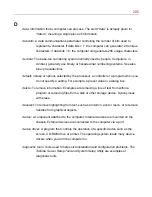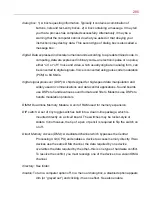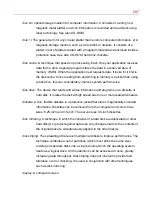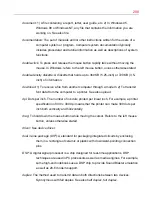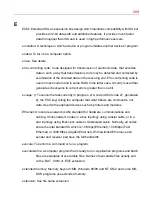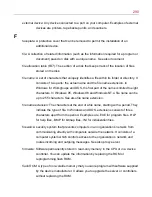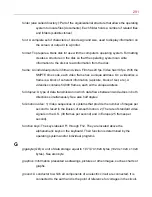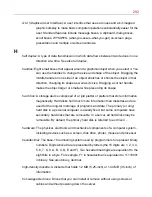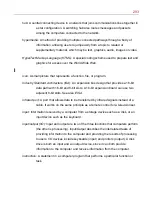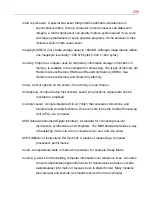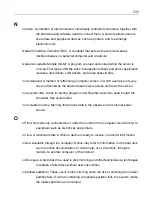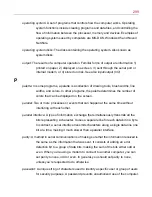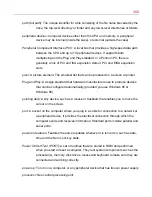
285
D
data: Information that a computer can process. The word “data” is actually plural for
“datum,” meaning a single piece of information.
data bits: A data communications parameter controlling the number of bits used to
represent a character. If data bits = 7, the computer can generate 128 unique
characters, if data bits = 8, the computer can generate 256 unique characters.
decimal: The base-ten numbering system normally used by people. Computers, in
contrast, generally use binary or hexadecimal numbering systems. See also
binary, hexadecimal.
default: Values or options selected by the processor, a controller or a program when you
do not specify a setting. For example, a preset value in a dialog box.
delete: To remove information. Examples are removing a line of text from within a
program or removing files from a disk or other storage device. Synonymous
with erase.
deselect: To remove highlighting from text, such as an item in a list or menu, or to remove
handles from graphical objects.
device: A component attached to the computer. Internal devices are mounted on the
chassis. External devices are connected to the computer via a port.
device driver: A program that controls the operation of a specific device such as the
screen, CD-ROM drive or printer. The operating system loads many device
drivers when you turn the computer on.
diagnostic tools: Tools used to help solve installation and configuration problems. The
Toshiba Server Setup Tool and System Setup Utility are examples of
diagnostic tools.
Summary of Contents for 3200
Page 1: ... ...
Page 309: ...309 ...

